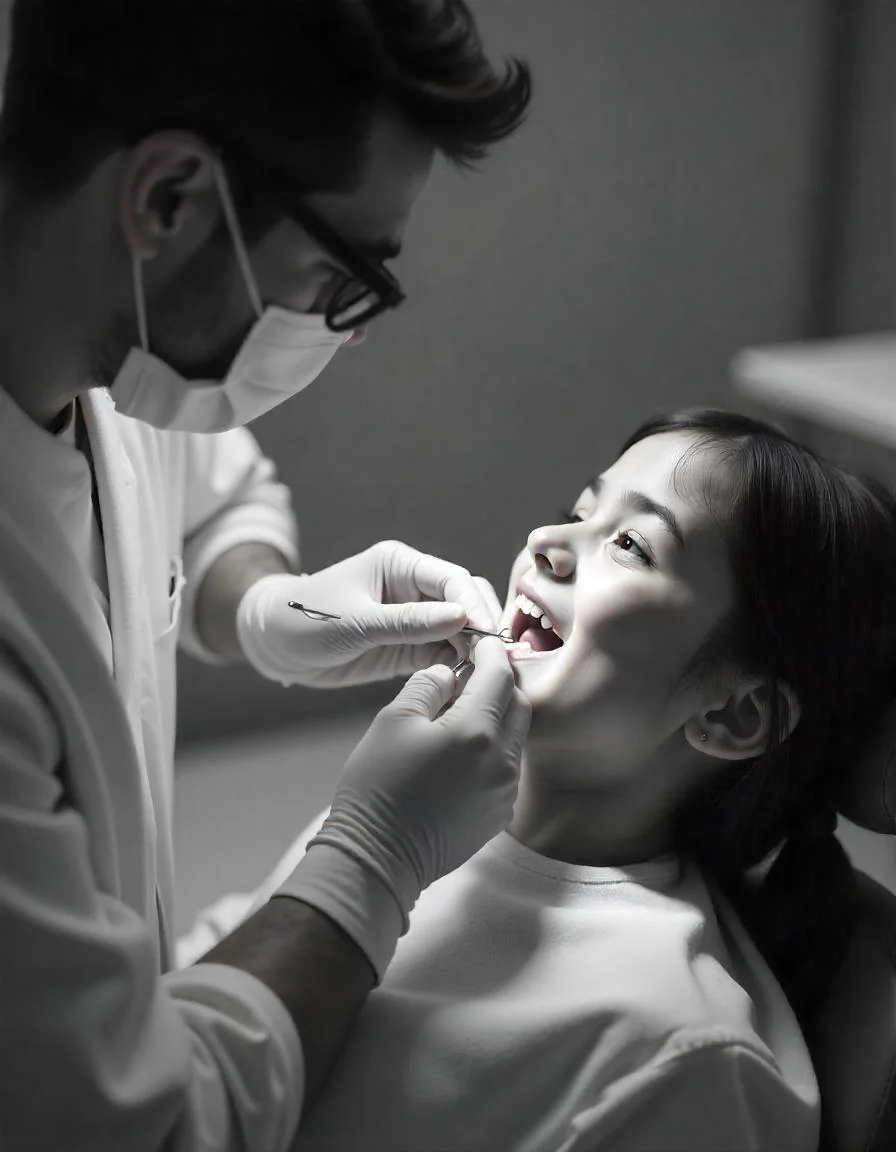Introduction
Food traps in the mouth are a common issue, often causing discomfort and potential dental problems. One often-overlooked factor that can contribute to food traps is dental fillings. Fillings worsening food trap is a concern that can lead to long-term oral health issues, including cavities, gum disease, and tooth sensitivity. In this article, we’ll explore how fillings can worsen food traps, the impact they can have on your oral health, and effective solutions to manage and prevent this issue.
What Are Food Traps and Why Do They Occur?
A food trap is a space between teeth where food particles tend to get stuck. These can be caused by various factors, such as misaligned teeth, gaps due to gum recession, or faulty dental work. Food that becomes trapped between the teeth can lead to bacteria buildup, which eventually causes bad breath, tooth decay, and gum inflammation.
Fillings worsening food trap occurs when dental fillings are improperly placed or damaged. Fillings that do not fit well against the teeth can create gaps that allow food to get stuck repeatedly. This not only causes irritation but can also lead to further dental problems, including cavities and gum disease.
How Fillings Contribute to Food Traps
Dental fillings are used to restore teeth affected by cavities or decay. While fillings are meant to improve dental health, if they are not properly placed or maintained, they can worsen food traps. Here are a few ways fillings can contribute to food becoming stuck between your teeth:
1. Improperly Installed Fillings
When fillings are not placed correctly, they may leave small gaps between the teeth. These gaps, even if they seem tiny, can easily trap food. Over time, this can create an ongoing issue where food continues to get stuck in the same area, worsening the food trap problem.
2. Chipped or Cracked Fillings
Fillings that are chipped or cracked provide a perfect hiding place for food particles. Even small chips in the filling can cause food to get trapped, making it harder for you to clean the area thoroughly. This can lead to plaque buildup and further complications.
3. Under-Contoured Fillings
Fillings that do not properly mimic the natural contour of the tooth can cause food to collect around them. For instance, a filling that is slightly too large or not smooth enough can create a ridge where food can easily get stuck.
4. Fillings with Flash or Excess Material
Flash is excess filling material that spills over the edges of a tooth, creating an uneven surface. This flash can trap food particles and bacteria, making it harder to clean the tooth properly. Additionally, the excess material can irritate the gums, leading to swelling and discomfort.
The Impact of Food Traps on Oral Health
Food traps, especially those caused by fillings worsening food trap, can lead to several serious dental issues if left untreated. Here’s how they can affect your oral health:
1. Tooth Decay and Cavities
When food gets trapped in a gap caused by a filling, it begins to decompose, producing acids. These acids can erode the enamel on your teeth, leading to cavities. If cavities are left untreated, they can cause pain, sensitivity, and even tooth loss.
2. Gum Disease
Food traps that persist can lead to gum disease. The trapped food encourages bacteria to thrive in the space, leading to gingivitis (early-stage gum disease) or periodontitis (advanced gum disease). Gum disease can cause gum recession, bleeding gums, and tooth mobility, all of which require professional treatment.
3. Bad Breath
Persistent food buildup in the mouth can cause bad breath. As food decomposes, it creates unpleasant odors. Regularly getting food trapped between the teeth and fillings can contribute to chronic halitosis (bad breath), which can be both embarrassing and uncomfortable.
4. Tooth Sensitivity and Pain
If food consistently gets stuck in a gap caused by a damaged or poorly placed filling, it can expose sensitive areas of the tooth. This can lead to increased sensitivity to hot, cold, or sweet foods, and in some cases, sharp pain when chewing.
The Role of Proper Filling Placement in Preventing Food Traps
The best way to prevent fillings worsening food trap is to ensure that dental fillings are properly placed. A well-fitted filling will match the contour of the natural tooth and provide a tight seal, leaving no room for food to get trapped. Here’s what you can do to prevent food traps from fillings:
1. Choose a Skilled Dentist
Choosing an experienced dentist who is skilled in placing fillings is crucial. A properly placed filling should seamlessly blend with the natural contours of your tooth and prevent gaps. If you experience frequent food traps, it might be a sign that your filling was not placed correctly.
2. Regular Dental Checkups
Routine dental visits allow your dentist to monitor the condition of your fillings. During these checkups, your dentist can spot any potential problems, such as fillings that are wearing down or loosening, which could lead to food traps.
3. Consider Composite Fillings
Composite fillings are often a better option than amalgam fillings when it comes to preventing food traps. Composite fillings can be shaped and molded to fit the tooth more accurately, reducing the likelihood of food getting stuck.
4. Repair Damaged Fillings Promptly
If you notice any chips, cracks, or other damage to your fillings, visit your dentist immediately to have them repaired or replaced. Damaged fillings are more likely to trap food and cause discomfort.
When to Replace or Repair Fillings
If your fillings are contributing to fillings worsening food trap, it’s important to take action before the issue worsens. Here’s when you should consider replacing or repairing your fillings:
1. Frequent Food Trapping
If you find that food is consistently getting stuck in the same area, it could indicate that your filling is improperly placed or damaged. In this case, it’s essential to consult your dentist about replacing or repairing the filling.
2. Visible Damage or Wear
If your filling is visibly cracked, chipped, or showing signs of wear, it’s time to have it replaced. Even if you don’t experience food traps, damaged fillings can lead to other issues like tooth decay or gum irritation.
3. Pain or Sensitivity
If you experience pain or sensitivity in the area where your filling is located, it could be a sign that the filling is no longer functioning properly. This could be due to a gap or crack that’s allowing food to become trapped.
Alternative Treatments for Persistent Food Traps
If replacing or repairing your filling doesn’t resolve the issue, there are alternative treatments that can help eliminate food traps and prevent further damage:
1. Dental Crowns
For severely damaged teeth, a dental crown may be a better solution. Crowns completely cover the tooth, providing a seamless surface that prevents food from becoming trapped.
2. Dental Implants
In cases where the tooth is beyond saving, a dental implant may be necessary. Implants are a permanent solution that replaces a missing tooth and prevents food from getting trapped in the area.
3. Gum Grafting
If gum recession is contributing to food traps, a gum graft may be recommended. This procedure involves taking tissue from another part of the mouth to restore gum tissue around the affected tooth, which helps seal any gaps.
Preventive Measures for Avoiding Food Traps
To avoid food traps caused by fillings worsening food trap, consider these preventive measures:
1. Maintain Good Oral Hygiene
Brushing and flossing regularly can help prevent food from getting trapped in the first place. Use floss to clean between your teeth and around fillings, and consider using an interdental brush or water flosser for better access.
2. Use Mouthwash
Rinsing with an antibacterial mouthwash can help reduce the bacteria in your mouth, especially in areas where food is more likely to get trapped. This can help prevent the buildup of plaque and bacteria that leads to gum disease and decay.
3. Avoid Hard or Sticky Foods
Hard or sticky foods can contribute to food traps, especially if you have fillings that are not perfectly sealed. Try to avoid foods that are more likely to get stuck in your teeth, such as hard candies, nuts, or caramel.
Conclusion: Addressing Food Traps Caused by Fillings
Fillings worsening food trap is a common issue that can lead to serious dental problems if not addressed. By understanding how fillings contribute to food traps and taking steps to ensure they are properly placed and maintained, you can prevent the discomfort and long-term oral health issues caused by this problem. Regular dental checkups, proper filling placement, and prompt repair of damaged fillings are key to maintaining good oral health and preventing food traps from affecting your smile.


